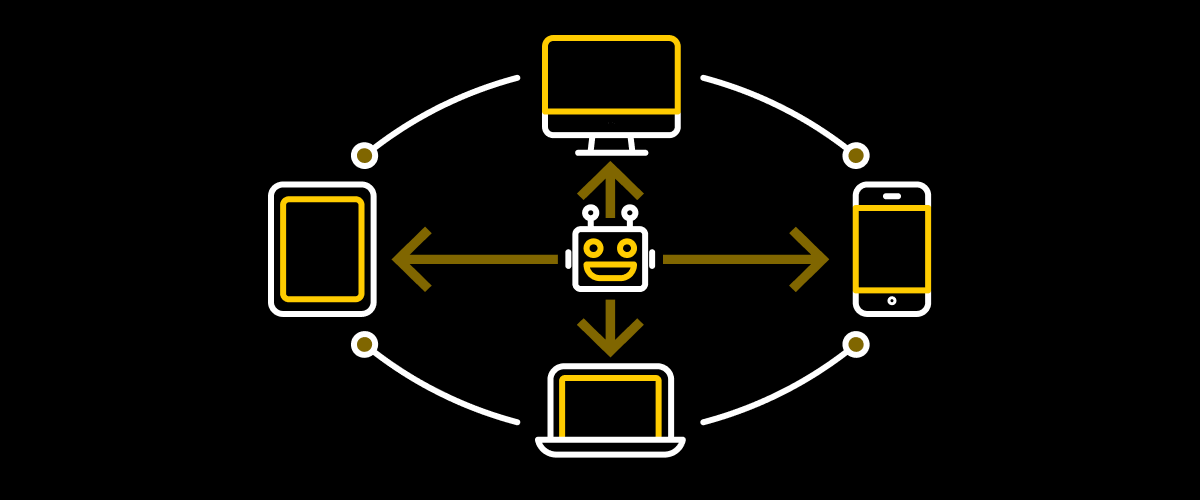Like countless others in this era of hyper-connectedness, I expect answers on demand. I want to be able to find them easily, and fast. The brands and companies we trust and patronize know this and because of this, are trying to take an “omnichannel” approach to engage with us — offering us content/apps for our computers, phones, TVs, home assistants (e.g. Amazon Echo) and even our cars. Wherever we are, whatever we’re doing, that thing we need — an answer to a question or a product we want to “buy now” —should just be a query away.
But doing omnichannel well isn’t easy, especially in customer support. When we, as consumers, really need help, the last thing we need is more places — more channels — to search for answers. This is an area where an intelligent virtual agent can really help. Let me explain.
Problems with omnichannel starts with the term itself
It’s become chic for company executives to describe their marketing and customer support as omnichannel when they talk with the press or investors. But like many buzzwords, the term omnichannel has become widely misused.
Many companies say that by offering different customer touchpoints, they are providing an omnichannel experience. However, they sometimes mean they are providing more information or experiences via more channels — which is, by definition, a “multichannel” approach.
So what elevates a multi-channel approach into an omnichannel approach? Wikipedia’s entry for omnichannel says it best: “Rather than working in parallel, communication channels and their supporting resources are designed and orchestrated to cooperate.”
The omnichannel orchestration challenge
When you dig into the different technologies that are used as the backbone for today’s customer support, orchestrating those pieces “to cooperate” isn’t so simple. And, there’s also the human teams that manage those channels — to truly deliver omnichannel requires a heightened amount of coordination.
The challenges go even deeper, as a Forrester report about omnichannel retail suggests: “Regardless of who is ultimately responsible for omnichannel, a successful strategy requires more than just deep cross-functional alignment. Many retailers today are going further by unifying their P&Ls, organizations, and technology to ensure an obsessive focus on the needs of the customer rather than the needs of legacy channel structures.”
There’s an interesting illustration of just how disconnected some channels are in today’s call center within Directly’s recent report, The Inner Circle Guide to AI, Chatbots & Machine Learning. Fifteen percent of call center agents whose companies offer web self-service do not have any idea of its success from the customers’ perspective. To rephrase slightly, they don’t even know what the customer experience is.
As Steve Dennis of Forbes recently wrote about omnichannel retail, “the problem for far too many retailers is that they still are stuck in their channel-centric thinking and their organizations, metrics, systems, and incentives still reflect that. Embrace the blur. Silos belong on farms.”
Enter the virtual agent layer: The omnichannel front door
The value proposition of omnichannel stems from a company’s desire to more effectively serve customers, who demand answers, fast, wherever they are, and on whatever device or platform they choose. Not just any answers, the right answers. With the fragmented digital landscape, it’s difficult for humans to do this effectively. And that’s why virtual agents are a better fit for the job.
Virtual agents can plug into your different channels and technology — becoming the ubiquitous front-end of the omnichannel experience. A branded virtual agent can be a point of entry for your website, social media, mobile apps, home assistants, connected TVs — and even your phone support. Informed by machine learning and trained by human experts, with data and support layers hidden behind it, this virtual agent can efficiently resolve many inquires. And when needed, it can gracefully and instantly hand off any complex issues to the right expert and medium.
Put another way, think of your company’s VA as the host or hostess for a restaurant. If you go out for dinner, it doesn’t matter how you got there — whether via “channels” like your car, an Uber ride, a bike or a scooter. You open the restaurant door and your hostess greets you, seats you, makes sure you have menus, water, and a waiter.
Why should omnichannel support be any different? Many channels. One front door and one intelligent agent.
What does an omnichannel virtual agent look like in action?
At Directly, we’re hard at work helping businesses improve customer service through intelligent automation. Want to see what that looks like? Set up a demo today.
